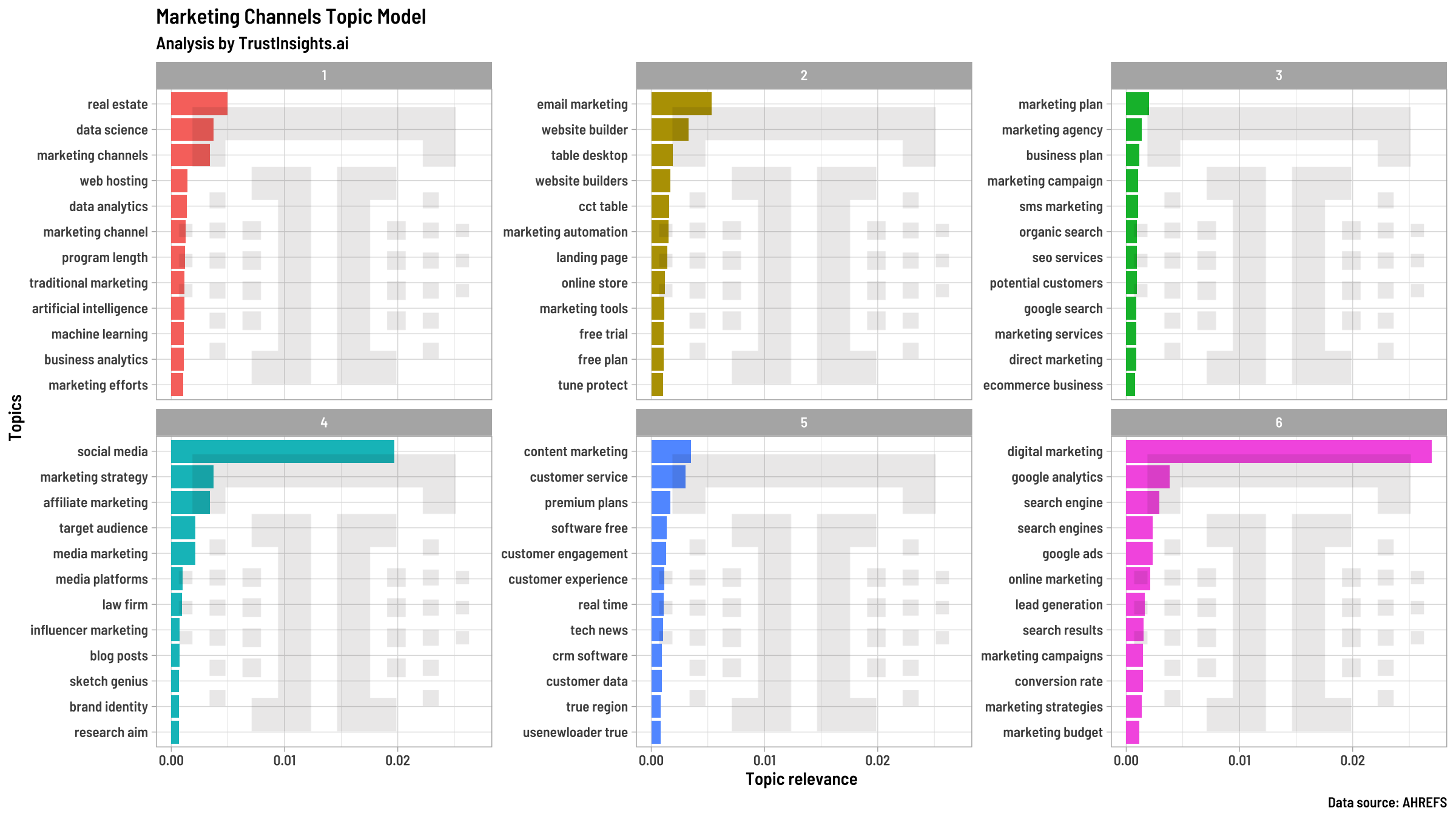This data was originally featured in the May 11th, 2022 newsletter found here: https://www.trustinsights.ai/blog/2022/05/inbox-insights-may-11-2022-transmedia-storytelling-marketing-channels-ai-and-culture/
In this week’s Data Diaries, we dig into topic modeling again. As we were preparing for last week’s livestream about AI and marketing channels, one of the questions I had was what marketing channels were on marketers’ minds. When you hear the term “marketing channels”, what comes to mind?
When I think about this term, things like email marketing, direct response, social media marketing, etc. all spring to mind. Similar things probably pop into your head as well. But how would we get to know what’s on marketers’ minds? One of the simplest ways to do this is to investigate what content is being written on the topic. After all, the content we consume often shapes our point of view. So when we look at more than 8,000 articles on the topic of content marketing, what do we find as the most common phrases?

What we see are a few basic buckets:
- Email marketing
- Social media marketing
- Affiliate marketing
- Influencer marketing
- Content marketing
- Organic search
- Paid search
- SMS marketing
- Direct marketing
- Performance marketing
Here’s the big question: is this all there is to marketing today? Thousands of articles online seem to think so. There are, of course, plenty of sub-categories; Facebook, Instagram, Tiktok, etc. all fall under the banner of social media. Video, audio, podcasts, streaming, etc. all fall under content.
What’s missing? At a glance, things like broadcast media – TV, radio, and print – are a glaring omission. Public relations is missing. Community marketing, mobile marketing (especially apps), and word-of-mouth marketing are missing.
What’s really missing is what Katie pointed out in the opening section. Content marketing is horizontal – you create your story, then you fit it to the formats that it works best in, and only then do you find the appropriate channels for those formats. When we reconsider the list of top marketing channels above, they are indeed mechanisms for distributing content, but there’s not a ton of data hinting at the overall comprehensive strategy.
Now, obviously, there’s a bit of a bias; articles about marketing channels would be expected to discuss marketing channels the most; perhaps we might see different results if we focused on marketing strategy as the overall topic. However, things like storytelling and content strategy should be in there SOMEWHERE, even if they’re not super prominent. Their absence is telling in how marketers are being conditioned to think about marketing channels – be sure you haven’t fallen into that trap!
Disclosures and Methodology: Trust Insights extracted 8,509 articles about marketing channels from the AHREFS SEO software platform. Articles were limited to those that had at least 1 pageview and the main focus was marketing channels, then filtered to the top 50% of articles by traffic. The timeframe of the data is April 30, 2021 – May 9, 2022. The date of study is May 10, 2022. Trust Insights is the sole sponsor of the study and neither gave nor received compensation for data used, beyond applicable service fees to software vendors, and declares no competing interests.
|
Need help with your marketing AI and analytics? |
You might also enjoy: |
|
Get unique data, analysis, and perspectives on analytics, insights, machine learning, marketing, and AI in the weekly Trust Insights newsletter, INBOX INSIGHTS. Subscribe now for free; new issues every Wednesday! |
Want to learn more about data, analytics, and insights? Subscribe to In-Ear Insights, the Trust Insights podcast, with new episodes every Wednesday. |






